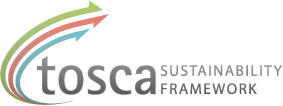Integration of LCA at SCA hygiene business
By Ellen Riise
History
SCA started to work with LCA during the early nineties. People working in the environmental department had heard about LCA and thought it was interesting to learn more. In a workshop within the company in 1990 a flow chart for all the processes for all the materials in one product was constructed. This gave the participants a good understanding, as well as quite big surprise, of all parts that constitutes the life cycle of a typical product of SCA, a baby diaper!
Work followed to collect data for the different materials in a such a product, e.g. fluff pulp, nonwoven, PE film, super absorbers, etc. Also data from the company’s own manufacturing and good and representative background data for fuel, electricity, transports, etc., was collected.
These data were stored in an internally developed calculation tool, a spread sheet based solution. The way to use the LCA method was to do calculations to get LCA results for a “new” products which were compared with results for an “old” product, and this work was done for the product development department.
Already in the mid-nineties the idea of measuring the environmental performance of the company’s products became formalized by having a request for environmental evaluation as a part of the product development process.
In the late nineties also the work with doing LCAs for the other part of SCA’s hygiene business, its tissue products and production, started. An LCA for a tissue product have another profile, partly because there is one major raw material, pulp, and the own manufacturing is a process, compared to diaper manufacturing which is a typical converting industry.
The first ten years of LCA has been documented in the CPM report “Expanding the green practice of LCA” (E. Rex, H. Baumann, CPM report 2004:1) .
Data collection
The crucial thing for the further development of the LCA method within the company was to be able to collect data. The typical result of the personal care products of the company is a large contribution from the raw materials that is used in the product. This made it necessary to focus on supplier data and how to get data from them.
What was really characteristic of the first LCA practitioner in the company was the spirit of never giving up and always finding pragmatic solutions to the data collection! For example, if no data were to be found, a theoretical model could be created instead based on experience, theoretical facts on chemical processes etc. The company has greatly benefited from this approach with a lot of learning from that time. This has given the company an good experience to handle data gaps that might occur.
As for generic data, SCA has to a large extent based this on literature data and also data in the database of SPINE@CPM. During the last years the company uses some selected datasets from the Ecoinvent database.
Over the years there have been regular data collection activities. In 2009, as part of an EU +Life project, TOSCA, SCA started to strengthen the work with the suppliers. Based on SCA’s Global Supplier standard, the suppliers are required to work with environmental improvement and supplying data to SCA. To support this, the purchasing department at SCA are working with tools and procedures that have been developed within the TOSCA-project.
Data documentation format
The hygiene business of SCA early took the decision to document all its collected data according to the SPINE format, which later on has been worked into the format of the ISO technical specification ISO/TS 14048. With this documentation format the company secures the quality of the data (one can document “data about data”), the possibility to reuse the data (it is well documented what the data represents, when it can be used) and it simplifies reviews (the reviewer can always get more information about a specific dataset, also questions about a specific data flow can be answered).
Internalising LCA in SCA
After some years a formal function became established in the company. This was achieved by consolidating the internal competence on LCA and having a structured way of working with the method. At the same time, the company also had a “champion” for LCA, a person who promoted and advocated the use of the tool in all levels of the company. Another important step in consolidating the way SCA worked with LCA was to join the competence centre CPM, hosted by Chalmers University of Technology, Göteborg, Sweden. Within the centre, together with 10 – 12 other international companies based in Sweden, SCA participated in projects mainly developing the method of LCA and the handling of environmental information.
If one analyses the different factors around the development of LCA within SCA, one can clearly see how this corresponds with the findings of Frankl & Rubik1, where factors like external co-operations and having a “champion” in the company are listed as success factors for institutionalisation of LCA.
1 Frankl, P. & Rubik, F. ”Life Cycle Assessment in Industry and Business – Adoption patterns, applications and implications”, 2000

